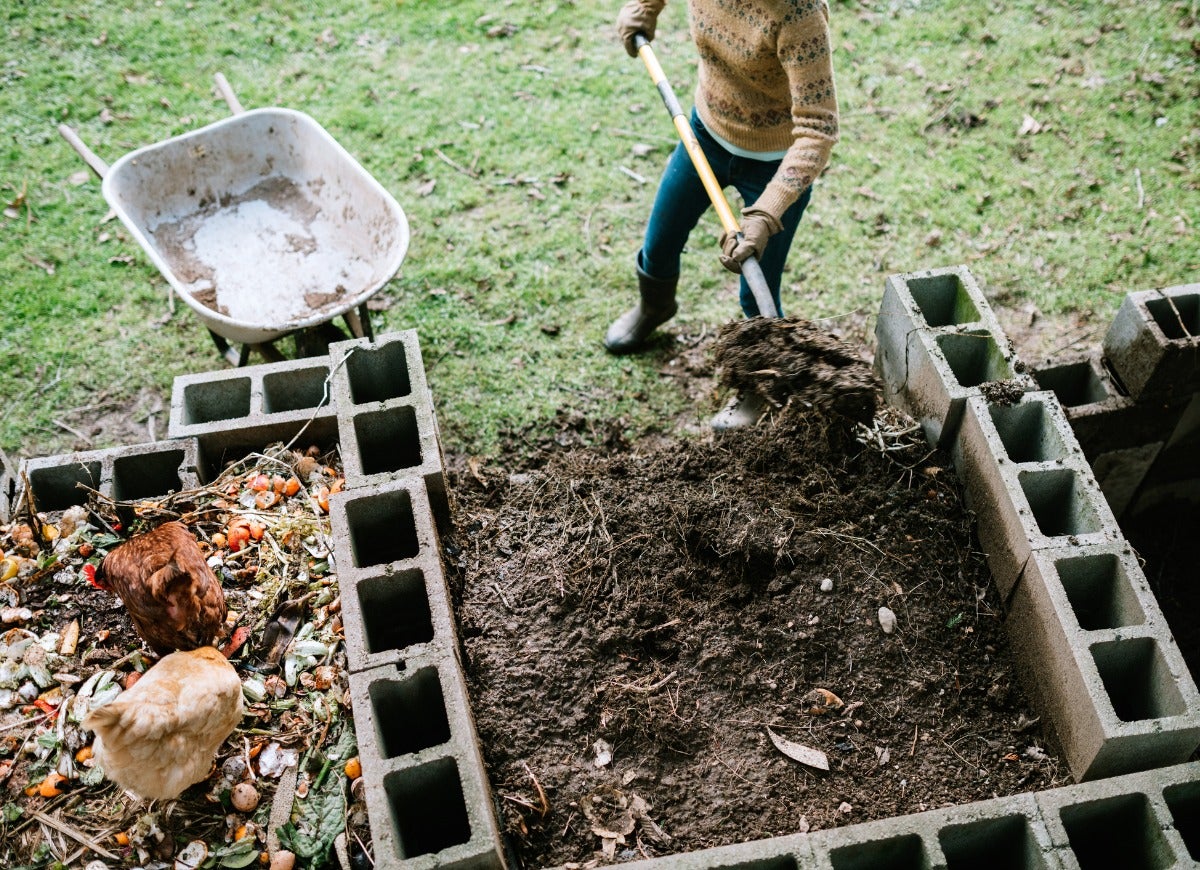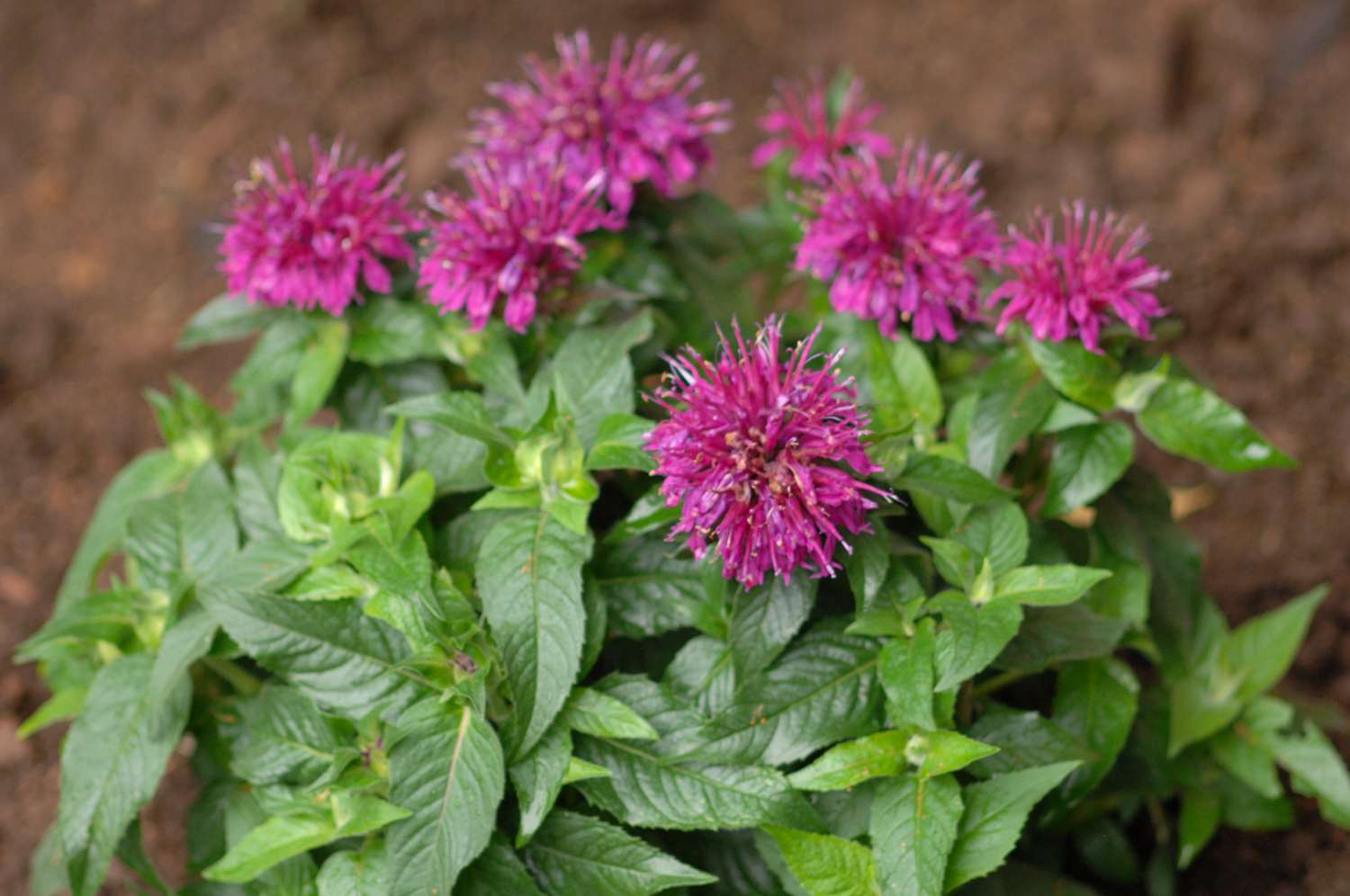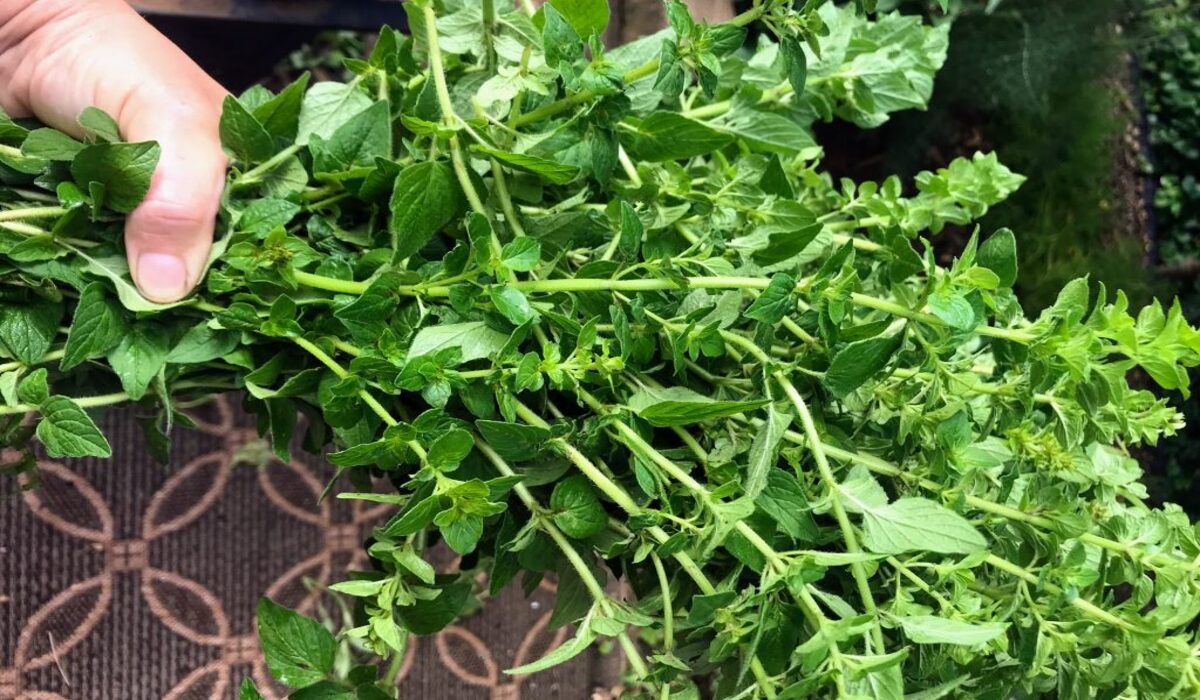Home>Gardening Basics>Understanding Soil>How To Grow Microgreens Without Soil


Understanding Soil
How To Grow Microgreens Without Soil
Published: February 14, 2024
Learn how to grow microgreens without soil and understand the importance of soil-free cultivation. Discover innovative techniques for soilless microgreen production.
(Many of the links in this article redirect to a specific reviewed product. Your purchase of these products through affiliate links helps to generate commission for Chicagolandgardening.com, at no extra cost. Learn more)
Table of Contents
Introduction
Welcome to the world of microgreens, where miniature plants pack a powerful punch of flavors and nutrients. In this article, we’ll explore the fascinating realm of growing microgreens without soil, offering a sustainable and space-efficient way to cultivate these vibrant greens right in your own home.
Traditionally, microgreens have been grown in soil, but the soilless method provides an innovative and convenient alternative. By eliminating the need for soil, this approach not only reduces mess and hassle but also opens up opportunities for urban dwellers and individuals with limited space to partake in home gardening.
Whether you’re a culinary enthusiast looking to elevate your dishes with fresh, homegrown ingredients or a health-conscious individual seeking nutrient-dense additions to your diet, growing microgreens without soil offers a rewarding and accessible avenue to explore. In the following sections, we’ll delve into the benefits, materials needed, step-by-step instructions, harvesting techniques, and essential tips for successfully cultivating microgreens without soil.
Join us on this exciting journey as we unlock the secrets to cultivating these miniature marvels, and discover the joy of nurturing and harvesting your very own microgreen bounty, all without the need for traditional soil.
What Are Microgreens?
Microgreens are young, tender greens that are harvested at an early stage of growth, typically when the first true leaves have developed. These miniature greens are bursting with intense flavors, vibrant colors, and a concentrated nutrient content, making them a popular choice among chefs, home cooks, and health enthusiasts.
These tiny powerhouses of nutrition are harvested at a stage between sprouts and baby greens, usually within 7-21 days after germination, depending on the plant variety. While they may be small in size, microgreens are mighty in terms of their nutritional profile, often containing higher levels of vitamins, minerals, and antioxidants compared to their mature counterparts.
Microgreens come in a diverse array of flavors, ranging from mild and nutty to spicy and tangy, depending on the plant variety. Common microgreen varieties include broccoli, kale, radish, arugula, and many more, each offering a unique taste and nutritional composition.
These versatile greens are not only prized for their culinary appeal but also for their visual aesthetic, as they can add a pop of color and texture to a wide range of dishes, including salads, sandwiches, soups, and garnishes. With their delicate yet complex flavors, microgreens have become a staple in upscale restaurants and home kitchens alike, elevating the overall dining experience with their fresh and vibrant presence.
Now that we have a better understanding of what microgreens are, let’s explore the advantages of growing these miniature greens without soil, and how this innovative approach can enhance the accessibility and sustainability of home gardening.
Benefits of Growing Microgreens Without Soil
Growing microgreens without soil offers a myriad of advantages, making it an appealing option for home gardeners and urban dwellers alike. One of the primary benefits is the conservation of space, as soilless cultivation allows for vertical or compact growing setups, making it ideal for those with limited gardening areas. Additionally, this method reduces the potential mess and weight associated with traditional soil-based gardening, providing a cleaner and more manageable growing experience.
Furthermore, soilless microgreen cultivation can contribute to sustainable practices by minimizing the use of natural resources. By utilizing hydroponic or other soilless techniques, water consumption can be reduced, and the overall environmental impact of gardening can be lessened. This aligns with the growing emphasis on eco-friendly and resource-efficient approaches to food production.
Another notable advantage of soilless microgreen cultivation is the potential for year-round growth. With the right indoor setup and controlled environmental conditions, such as proper lighting and humidity levels, microgreens can be grown continuously, regardless of seasonal limitations. This allows enthusiasts to enjoy a constant supply of fresh, homegrown greens, promoting self-sufficiency and reducing the reliance on store-bought produce.
Moreover, the absence of soil minimizes the risk of soil-borne pests and diseases, offering a cleaner and more hygienic growing environment. This can be particularly advantageous for individuals with sensitivities or allergies, as well as for those seeking a low-maintenance gardening approach.
From a culinary perspective, growing microgreens without soil provides an opportunity to experiment with different growing mediums, such as coconut coir or vermiculite, which can impart unique flavors and textures to the greens. This creative freedom allows home gardeners to tailor the growing process to their preferences, resulting in a diverse array of homegrown microgreens with distinctive characteristics.
As we delve further into the world of soilless microgreen cultivation, we’ll explore the materials needed and the step-by-step process for successfully growing these vibrant greens at home.
Materials Needed
Embarking on the journey of growing microgreens without soil requires a thoughtful selection of materials to create an optimal environment for the greens to thrive. While the absence of traditional soil simplifies the setup, several key components are essential for successful soilless cultivation.
1. Seeds: Choose high-quality, organic seeds of your preferred microgreen varieties. Popular choices include broccoli, kale, radish, and mustard, each offering distinct flavors and nutritional profiles.
2. Growing Trays or Containers: Select shallow trays or containers with good drainage to support the growth of microgreens. These can be specifically designed for microgreen cultivation or repurposed from other food-grade containers.
3. Growing Medium: Opt for a soilless growing medium such as coconut coir, peat moss, or vermiculite. These mediums provide adequate support for the germinating seeds and offer essential moisture retention without the use of traditional soil.
4. Watering Can or Spray Bottle: To ensure gentle and even moisture distribution, a watering can with a fine spout or a spray bottle is essential for hydrating the growing medium without disturbing the delicate microgreen seedlings.
5. Light Source: Adequate lighting is crucial for the photosynthesis and overall development of microgreens. Natural light from a sunny windowsill or artificial grow lights can be used to provide the necessary light energy for the greens to flourish.
6. Humidity Dome or Plastic Wrap: Maintaining high humidity levels during the initial stages of growth is vital for successful germination. A humidity dome or plastic wrap can create a greenhouse-like environment, promoting optimal conditions for seedling emergence.
7. Water: Access to clean, preferably filtered water is essential for the irrigation of microgreens. It is important to use water that is free from contaminants and chlorine, which can hinder seedling development.
By assembling these fundamental materials, you’ll be well-equipped to embark on the rewarding journey of cultivating vibrant and nutritious microgreens without the need for traditional soil. In the following section, we’ll delve into the step-by-step process of growing microgreens without soil, guiding you through each stage of the cultivation journey.
Steps to Grow Microgreens Without Soil
Growing microgreens without soil involves a straightforward and rewarding process that allows you to witness the rapid growth and development of these miniature greens. Follow these steps to embark on your soilless microgreen cultivation journey:
1. Prepare the Growing Trays: Select shallow trays or containers and fill them with a thin layer of the chosen soilless growing medium, ensuring even distribution and gentle compaction.
2. Sow the Seeds: Scatter the seeds evenly over the surface of the growing medium, aiming for a dense yet uniform coverage. Gently press the seeds into the medium to promote good seed-to-medium contact.
3. Provide Adequate Moisture: Water the seeds and growing medium thoroughly, ensuring that the moisture penetrates the entire depth of the medium without causing waterlogging. A fine misting or gentle watering can be used to avoid displacing the seeds.
4. Create a Greenhouse Environment: Cover the trays with a humidity dome or plastic wrap to create a warm and humid environment for the seeds to germinate. This enclosure helps retain moisture and encourages successful seedling emergence.
5. Facilitate Germination: Place the covered trays in a well-lit area, providing indirect sunlight or artificial grow lights to support the germination process. Maintain consistent humidity levels and monitor the trays for signs of emerging seedlings.
6. Promote Growth: Once the seedlings emerge, remove the humidity dome or plastic wrap and continue to provide ample light for the growing microgreens. Regular watering and monitoring of moisture levels are essential to support healthy growth.
7. Harvest at the Optimal Stage: As the microgreens reach the desired height and develop their first true leaves, they are ready for harvest. Using clean scissors, carefully snip the microgreens just above the soilless medium, ensuring a fresh and flavorful harvest.
By following these steps, you can cultivate a bountiful supply of vibrant and nutritious microgreens without the need for traditional soil. The next section will explore the essential techniques for harvesting and storing your homegrown microgreens, ensuring that you can enjoy their freshness and flavor to the fullest.
Harvesting and Storing Microgreens
Harvesting microgreens is a gratifying culmination of the cultivation process, allowing you to savor the vibrant flavors and nutritional benefits of these miniature greens at their peak. When the microgreens have reached the optimal stage of growth, typically when the first true leaves have emerged, it’s time to harvest and store them for culinary enjoyment.
To harvest your homegrown microgreens, follow these essential steps:
1. Prepare for Harvest: Ensure that the microgreens are well-watered and the growing medium is moist but not waterlogged. This facilitates easier harvesting and minimizes stress on the delicate seedlings.
2. Harvesting Technique: Using clean, sharp scissors or a small knife, carefully snip the microgreens just above the soilless medium. Aim to harvest the greens at the base of the stems, allowing for a fresh and tender harvest without disturbing the roots.
3. Inspect and Clean: After harvesting, inspect the microgreens for any discolored or damaged leaves, and gently remove any debris or seed hulls. This ensures that the harvested microgreens are clean and ready for consumption or storage.
4. Storage Guidelines: To prolong the freshness of the harvested microgreens, gently pat them dry with a clean paper towel to remove excess moisture. Store the microgreens in a breathable container or plastic bag lined with a paper towel, allowing for air circulation while maintaining optimal humidity.
5. Refrigeration: Place the container of harvested microgreens in the refrigerator, ideally in the crisper drawer, to maintain freshness. Properly stored microgreens can remain fresh for several days, allowing for versatile use in a variety of culinary applications.
By following these harvesting and storage techniques, you can enjoy the full flavor and nutritional benefits of your homegrown microgreens, elevating your culinary creations with a burst of freshness and vibrancy.
As we conclude the exploration of harvesting and storing microgreens, we’ll delve into essential tips for successfully growing microgreens without soil, offering valuable insights to enhance your cultivation experience.
Tips for Growing Microgreens Without Soil
Embarking on the soilless cultivation of microgreens opens up a world of possibilities for home gardeners, offering a convenient and sustainable approach to nurturing these vibrant greens. To optimize your microgreen growing experience, consider the following tips and insights:
1. Quality Seeds: Select high-quality, organic seeds from reputable sources to ensure successful germination and robust growth. Opt for seeds specifically designated for microgreen cultivation for optimal results.
2. Even Seed Distribution: When sowing the seeds onto the growing medium, aim for uniform coverage to promote consistent growth and a lush microgreen canopy. Avoid overcrowding, which can lead to competition for resources among the seedlings.
3. Moisture Management: Maintain appropriate moisture levels throughout the growing process, ensuring that the growing medium remains consistently moist but not waterlogged. Regular monitoring and gentle watering techniques are crucial for healthy seedling development.
4. Lighting Considerations: Provide adequate light for the emerging microgreens, whether through natural sunlight or artificial grow lights. Position the trays in a well-lit area, rotating them as needed to promote even growth and prevent leggy seedlings.
5. Optimal Temperature: Maintain a moderate temperature range for the growing microgreens, typically between 65-75°F (18-24°C), to support healthy growth and development. Avoid extreme temperature fluctuations, which can stress the seedlings.
6. Air Circulation: Promote gentle air circulation around the growing microgreens to prevent excessive humidity and minimize the risk of fungal issues. Proper ventilation supports the overall health of the greens and reduces the likelihood of moisture-related problems.
7. Harvesting at the Right Time: Monitor the growth of the microgreens closely and harvest them at the optimal stage, typically when the first true leaves have developed. This ensures the best flavor and nutritional content in the harvested greens.
By incorporating these tips into your soilless microgreen cultivation practices, you can enhance the success and enjoyment of growing these vibrant greens at home. The thoughtful application of these insights will contribute to the bountiful and flavorful harvest of your homegrown microgreens.
Conclusion
As we conclude our exploration of growing microgreens without soil, we’ve uncovered the fascinating world of cultivating vibrant and nutritious greens through innovative and sustainable methods. The soilless approach to microgreen cultivation offers a host of benefits, including space efficiency, sustainability, and year-round growth opportunities, making it an accessible and rewarding endeavor for home gardeners and culinary enthusiasts.
By embracing the soilless method, individuals can overcome traditional gardening limitations and engage in the gratifying process of nurturing these miniature marvels right in the comfort of their own homes. The use of high-quality seeds, thoughtful moisture management, and optimal growing conditions are essential elements in the successful cultivation of microgreens without soil, leading to a bountiful harvest of fresh and flavorful greens.
Furthermore, the journey of growing microgreens without soil extends beyond the cultivation process, encompassing the joy of harvesting, savoring, and incorporating these vibrant greens into a diverse array of culinary creations. Whether adorning salads, enhancing sandwiches, or enlivening soups and entrees, homegrown microgreens offer a delightful and nutritious addition to the dining experience.
As we’ve navigated through the essential steps, techniques, and tips for soilless microgreen cultivation, we hope that this exploration has ignited a sense of curiosity and inspiration, prompting you to embark on your own soilless microgreen growing adventure. The accessibility and sustainability of this approach, coupled with the rich flavors and nutritional benefits of homegrown microgreens, invite individuals to partake in the joys of nurturing and harvesting these miniature greens without the constraints of traditional soil-based gardening.
With a deeper understanding of the soilless cultivation process and a wealth of insights to guide your journey, we encourage you to embrace the art of growing microgreens without soil, and to savor the rewards of cultivating these vibrant greens in your own home.






